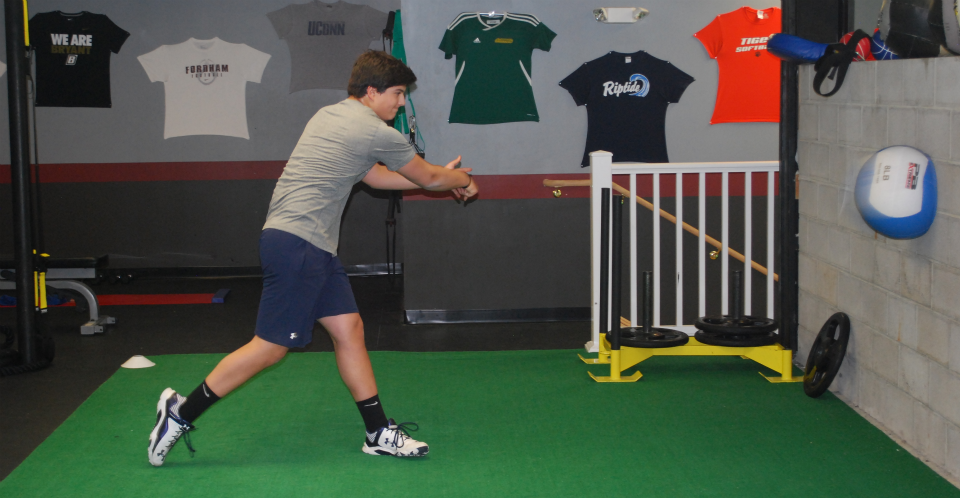|
Power is a quality that every great athlete needs to possess in order to excel at their sport. It is the final touches that propel good athletes into great ones. Without a doubt, this is an area that an advanced athlete needs to pay great detail and attention to. The questions that have to be asked are how and where does this power need to be applied. Does it involve rotational or linear movement? Those will be the questions that I look to answer for sport specific power development. first things first, the greatest amount of power that can be produced is transferred through the ground up through the lower body. When an athlete exhibits a tremendous amount of power, whether throwing, kicking, hitting, tackling or any other form, that power is produced by applying explosive force through the ground. Power and force are inversely related but are still components of one another. Bottom Line: Develop strong explosive wheels to produce tremendous amounts of power. What you need to produce the power against will usually dictate what direction you need to train power. If you are tackling an opponent you will most likely train power in the sagittal plane or perform a linear movement. If you are moving an object such as swinging a racket or throwing a football you will be training power in the transverse plane which is a rotational movement. Bottom Line: Power development should be sport specific for the advanced athlete. Ok, so we answered the how it needs to be produced and where it has to be applied. How about what should we do to train those sport specific power movements. Training power in the sagittal plane could involve movements such as box jumps, power cleans and snatches. These movements are all preformed in the sagittal plane and would be great exercises for a hitter (volleyball), power forward (basketball) or offensive guard (football). Athletes that need to train power in the transverse plane would use a variety of medicine ball rotational throws, scoops and slams. These would be great for our pitcher (baseball), quarterback (football) or golfer (golf).
Bottom Line: Power exercises should be selected based on the sport and position you play. Remember this topic is about advanced athletes. There is nothing wrong with a twelve year old quarterback working on rotational power, but let’s not get carried about getting to sport specific at a young training age. Let the athletes develop and learn, then master the basics. As for our advanced athletes sport specific training is key to their success.
0 Comments
Leave a Reply. |
Archives
July 2024
Categories
All
|
Proudly powered by Weebly


 RSS Feed
RSS Feed